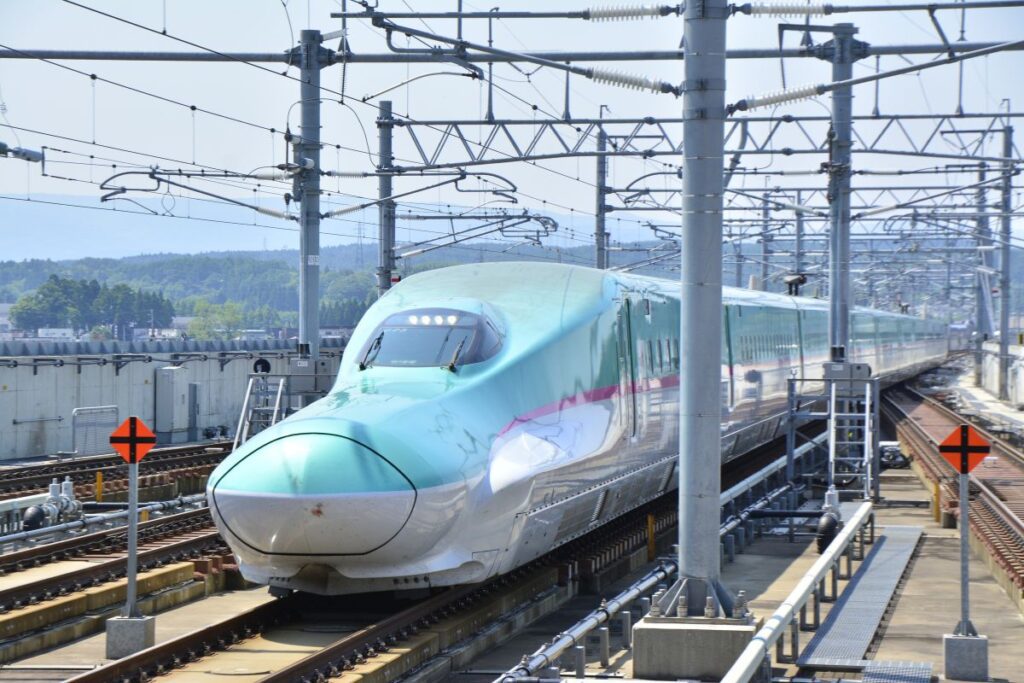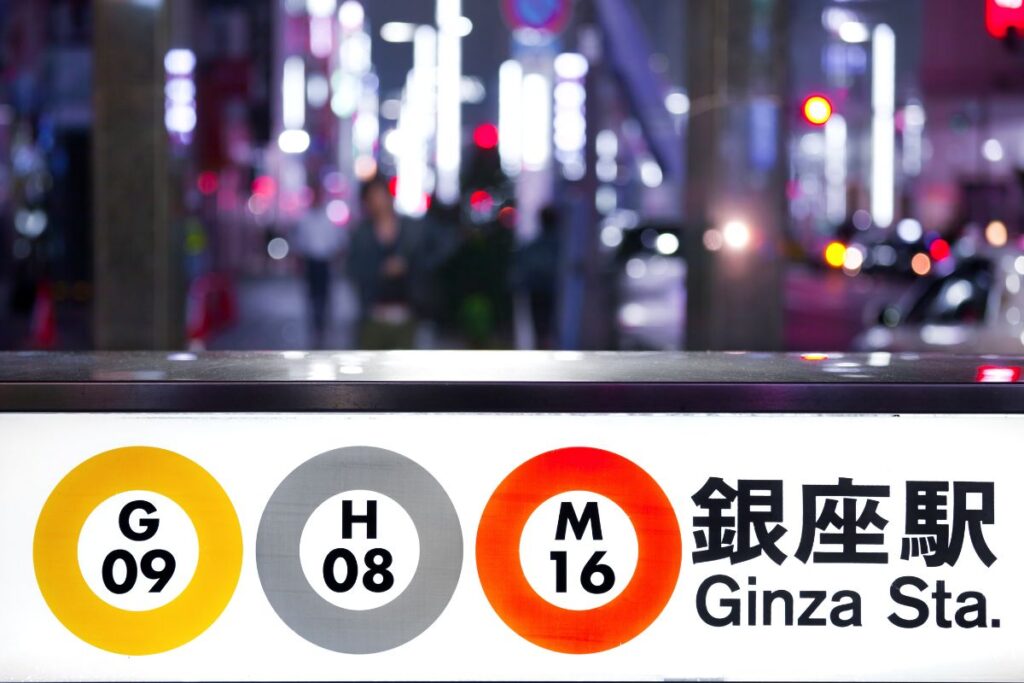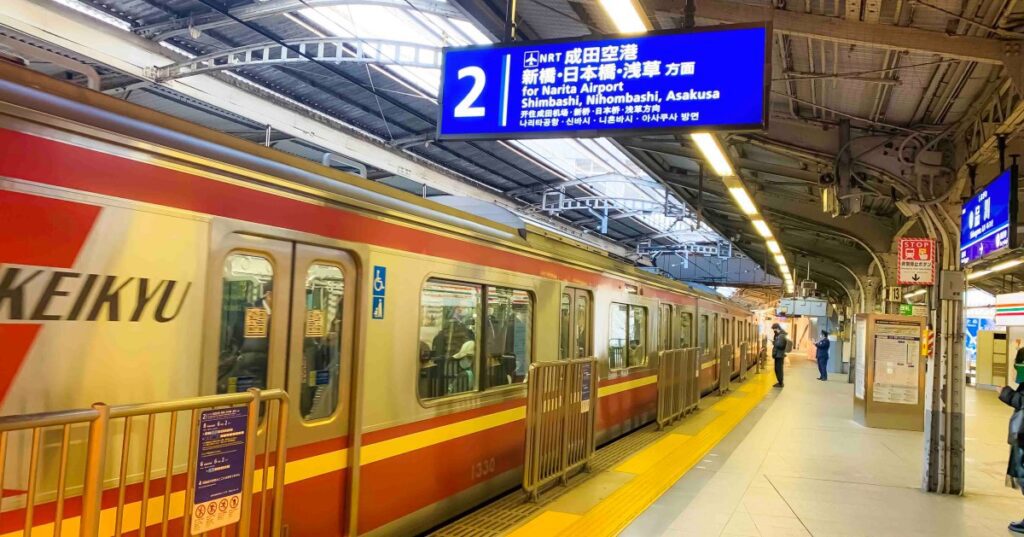Tokyo Train Lines seem complicated, but knowing these lines operation has the benefit of traveling Japanese Capital City. Tokyo’s public transportation network includes JR East’s extensive train lines, such as the Yamanote and Chuo Lines, which serve central Tokyo and its suburbs.
On the other hand, the subway system, operated by Tokyo Metro and Toei Subway, has numerous lines, like the Marunouchi and Oedo Lines, crisscrossing the city and offering deeper access to neighborhoods. This complex but efficient system is key to navigating the bustling metropolis of Tokyo.
Table of Contents
Brief Look at Tokyo’s Train Lines:
Tokyo Train Lines are difficult to understand. However, when we look attentively is very easy to understand.
Tokyo, being one of the largest cities in the world, has a comprehensive train system, which is an integral part of its public transportation. The system consists of several different types of trains:
Tokyo Metro: This is Tokyo’s primary subway system. The Tokyo Metro comprises 9 lines and offers extensive coverage of the city. It is heavily used for commuting in and around the city.
Toei Subway: This is the other subway system serving Tokyo. It’s operated by the Tokyo Metropolitan Bureau of Transportation and consists of four lines.
JR East (Japan Railways East): JR East operates the Yamanote Line, a loop line that circles central Tokyo, as well as several other lines that extend into the suburbs and surrounding regions. Other notable JR lines include the Chuo Line, Sobu Line, Keihin-Tohoku Line, and Saikyo Line.
Private Railways: There are several private railway lines that serve different areas of Tokyo and extend into the surrounding regions. Some of the notable ones include the Keio Line, Odakyu Line, Seibu Line, and Tobu Line. These lines are particularly useful for reaching places not served by the JR or Metro systems.

Shinkansen (Bullet Trains): The Shinkansen lines, while not typically used for commuting within Tokyo, have stations in Tokyo. The most central of these is Tokyo Station, where the Tohoku, Hokkaido, Joetsu, Hokuriku, and Tokaido Shinkansen lines stop. These high-speed trains connect Tokyo with other major cities in Japan.
Monorail: The Tokyo Monorail operates between Haneda Airport and Hamamatsucho Station, providing a vital transport link for air travelers.
Tram: The Toden Arakawa Line, also known as the Tokyo Sakura Tram, is a quaint and scenic tram line running through Tokyo.
Each of these train types serves different areas and purposes, and they are all well-integrated, making it easy for commuters to switch between different modes of transport.
Two Main Lines:
Except for the Shinkansen, Monorail, and Trum, Tokyo Train Lines are mainly divided into two lines-
1)Tokyo JR Line
2) Subway Line
However, these lines own a few companies, but stations are interrelated, which makes it easy to access Tokyo’s different wards.
JR are usual trains, but Subway trains run underground. JR Trains are easy to navigate, but Subway Lines are difficult to navigate.
1)Tokyo JR Lines:
JR East (East Japan Railway Company) operates several train lines in Tokyo and the surrounding region. Here are some of the significant JR lines in Tokyo:
1. Yamanote Line:
Yamanote Line is Tokyo’s most famous JR line, forming a loop around central Tokyo and connecting many of the city’s most popular areas, such as Shinjuku, Shibuya, Ueno, and Tokyo Station.
2. Chuo Line:
Chuo Line runs across Tokyo from east to west, going through Tokyo Station, Shinjuku, and out into the western suburbs and beyond.
3. Keihin-Tohoku Line:
Keihin-Tohoku Line operates parallel to the Yamanote Line on the eastern half of the loop, going through major stations like Tokyo, Akihabara, Ueno, and Shinagawa.
4. Sobu Line:
It runs from Chiba in the east through Tokyo Station and then west towards Yokohama and beyond.
5. Yokosuka Line:
This line runs from Tokyo Station south to Yokosuka in Kanagawa Prefecture, stopping at major stations such as Shinagawa and Yokohama.
6. Keiyo Line:
The Keiyo Line operates from Tokyo Station in central Tokyo to Chiba Minato Station in Chiba City, Chiba Prefecture, covering areas including Hatchobori, the Tokyo Disney Resort in Maihama, Shin-Urayasu, and the Makuhari district in Chiba.
7. Saikyo Line / Shonan-Shinjuku Line:
These lines serve the western side of Tokyo, Saitama, and Kanagawa Prefecture.
8. Utsunomiya Line (Tohoku Main Line), Takasaki Line, and Joban Line serve the northern suburbs and beyond.
Utsunomiya Line (part of the Tohoku Main Line) operates between Tokyo and Kuroiso in Tochigi Prefecture.
Takasaki Line connects Tokyo with Takasaki in Gunma Prefecture.
Joban Line runs from Tokyo to Iwanuma in Miyagi Prefecture, covering parts of Ibaraki and Fukushima Prefectures.
2. Tokyo Subway Lines:
Tokyo’s subway system is extensive and complex among the Tokyo Train Lines. Therefore, two entities jointly operate it:
A)Tokyo Metro
B)Toei Subway.
The two systems are interconnected, and tickets are interchangeable. For example, here are the lines of Tokyo’s subway system:
A)Tokyo Metro Subway Lines:
Tokyo Metro operates 9 lines. Here is a list of the full lines and the key areas they serve:
1. Ginza Line (Orange):
Connects Asakusa and Shibuya, passing through key areas such as Ginza (a famous shopping district) and Ueno (known for Ueno Park and cultural attractions).
2. Marunouchi Line (Red):
It runs between Ogikubo and Ikebukuro, passing through the Tokyo Station and the government district in Kasumigaseki. This line also serves Shinjuku, a major commercial and administrative center.
3. Hibiya Line (Silver):
This line connects Naka-Meguro and Kita-Senju, serving popular areas like Roppongi, Ebisu (known for dining and nightlife), and Akihabara (famous for electronics and otaku culture).

4. Tozai Line (Sky Blue):
Links Nakano in Tokyo with Nishi-Funabashi in Chiba Prefecture. It passes through the commercial districts of Otemachi and Nihombashi.
5. Chiyoda Line (Green):
It runs between Yoyogi-Uehara in Shibuya and Ayase in Adachi. In addition, this line serves the political district of Nagatacho and the academic district of Nezu.
6. Yurakucho Line (Gold):
Connects Wakoshi in Saitama Prefecture with Shin-Kiba in Koto, Tokyo. It passes through key areas like Ikebukuro, Ginza, and Shintomicho (near Tsukiji market).
7. Hanzomon Line (Purple):
Links Shibuya in Tokyo with Oshiage in Sumida, Tokyo, passing through central districts like Omotesando, Nagatacho, and Otemachi. It also serves the skyscraper district of Oshiage, where Tokyo Skytree is located.
8.Namboku Line (Emerald):
Runs from Meguro in Tokyo to Akabane-Iwabuchi in Kita, Tokyo. It serves the upscale residential district of Azabu-Juban and the commercial districts of Roppongi-Itchome and Tameike-Sanno.
9. Fukutoshin Line (Brown):
Connects Wakoshi in Saitama Prefecture with Shibuya in Tokyo. It passes through trendy areas like Shinjuku-Sanchome, Ikebukuro, and Jiyugaoka.
These are integral to the Tokyo Train Lines of the public transportation network and offer connections to other railway services, including JR East and Toei Subway lines. Therefore, getting a subway map or using a navigation app to understand the network better and plan your trips efficiently is advisable.
B)Toei Subway Lines:
Toei Subway, operated by the Tokyo Metropolitan Bureau of Transportation, manages 4 lines in Tokyo. Each line serves different key areas and connects to other rail networks, making it possible to reach almost any location in Tokyo.
Here are the Toei Subway lines:
1. Asakusa Line (Rose Pink):
Runs from Oshiage in Sumida to Nishi-Magome in Ota. It serves key areas like Asakusa, famous for the Senso-ji Temple, Kuramae (known for craft and textile shops), and Shimbashi, a significant transport hub.
2. Mita Line (Blue):
Mita Line operates from Meguro Station in Meguro to Nishi-Takashimadaira Station in Itabashi. It serves important locations like Mita, home to Keio University and many embassies; Sugamo, known for the popular shopping street Sugamo Jizo-dori; and Jimbocho, famous for its used bookstores.
3. Shinjuku Line (Leaf Green):
Runs from Shinjuku Station in Shinjuku to Motoyawata Station in Ichikawa, Chiba. It serves areas like Shinjuku, a major commercial and administrative center, Iwamotocho near Akihabara, and Bakuro-Yokoyama, a wholesale district.
4. Oedo Line (Ruby):
The Oedo Line is a loop line that connects 38 stations throughout central Tokyo. It stops at major areas like Shinjuku, Roppongi, a popular nightlife district, Tsukiji, famous for the former Tsukiji Fish Market, Ryogoku, known for the Ryogoku Kokugikan Sumo Stadium, and Ueno-okachimachi, near the Ueno Zoo and Ameya-Yokocho Market.
Tokyo’s JR Lines and Subway Lines provide an extensive, interconnected network that efficiently connects the city’s major hubs, local neighborhoods, and key tourist attractions, serving as the lifeline of this bustling metropolis. However, knowing about Tokyo Train Lines has vast benefits.
